XL-Calibur Image Gallery: Instruments
Detector
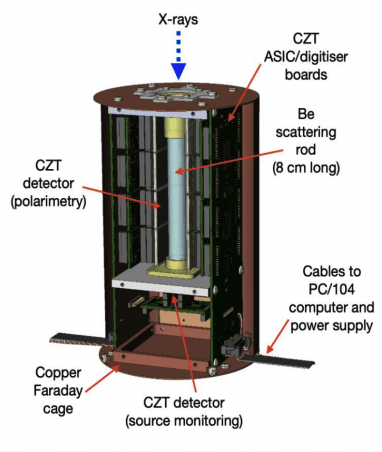
XL-Calibur polarimeter diagram. X-rays are focused by the mirrors, enter
through the collimator and encounter the Be scattering rod. CZT
detectors around the perimeter of the scattering rod measure the polarization
while the CZT detector at the base of the rod functions as a source
imager. The Faraday cage shields the instrument from electronic noise external
to the detector.

Housing around the polarimeter for XL-Calibur. Incoming X-rays enter through
the collimator and detected by the polarimeter (see above). The detector is
surrounded by Be4GeO12 (BGO) crystals with
photomultipliers which serve as an anticoincidence detector, allowing events
entering the instrument from directions other than the pointed direction
of the telescope to be rejected.
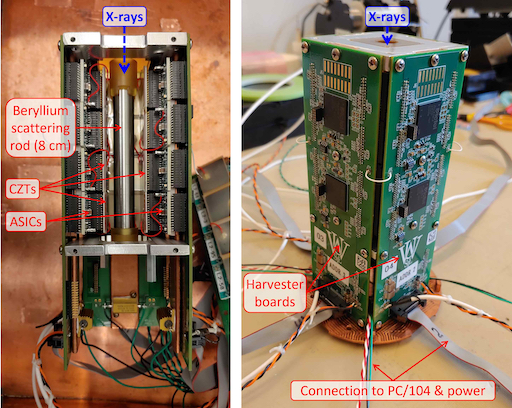
Photograph of the Be scattering rod, CZT detectors, and electronics.

Photograph of the shielding around the detector, including the photomultiplier tubes (PMTs)
which detect anti-coincidence events, the tungsten collimator, and the rolling
mechanism to slowly rotate the entire dtector assembly.
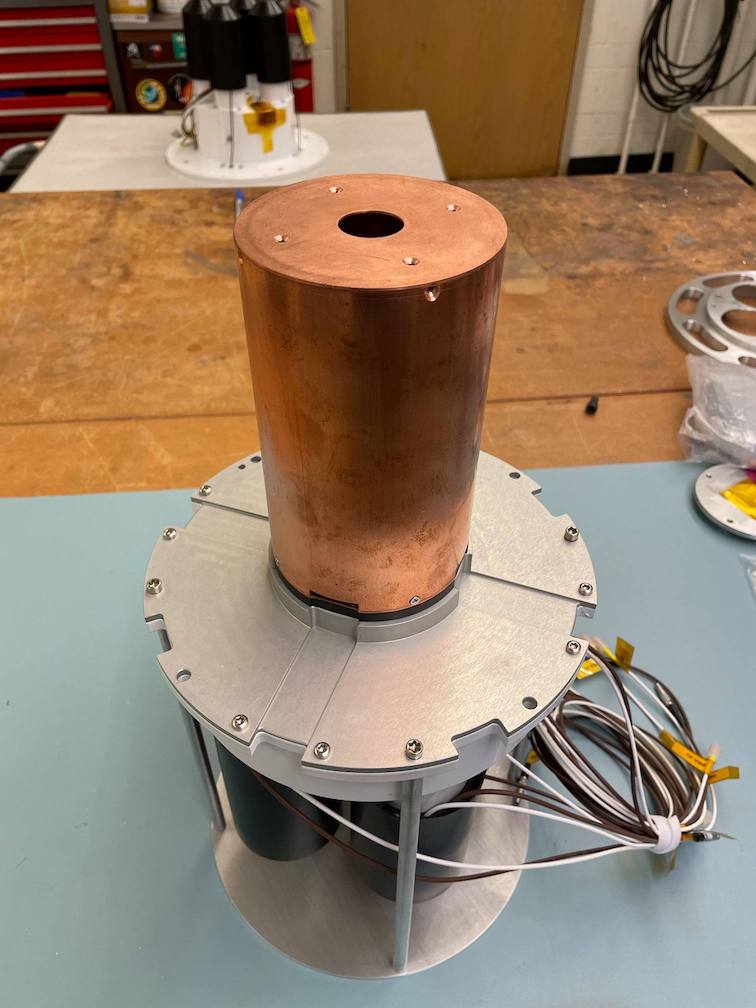
Photograph of the XL-Calibur polarimeter, partially assembled. The copper
colored element is the Faraday cage surrounding the Be scattering rod and CZT
detectors, and the base plate with the back plate of BGO anti-coincidence
detectors and photomultipliers are included, but the other surrounding BGO
crystals, photomultipliers, and the tungsten collimator have not yet been
mounted (but appear in the background on the rolling cart).
Mirrors

XL-Calibur telescope design.

The FFAST X-ray mirror assembly.
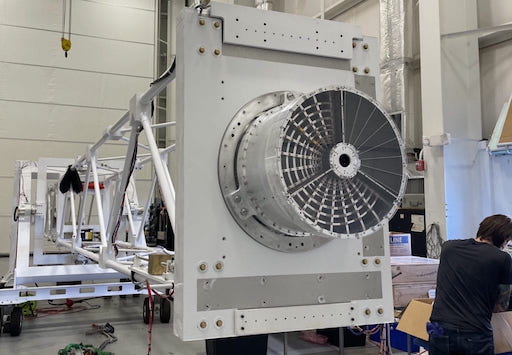
The truss for XL-Calibur with the nested mirror assembly facing out. The truss
is made of lightweight material, but designed to be strong enough to withstand
high-g stress encountered when landing at the end of the mission, and maintain
stability and shape during the temperature variations from the ground through
to the stratosphere. The mirror consists of a set of nested conical shells
of coated metal designed to focus incoming hard X-rays using grazing incidence
reflection. The focal point of the mirror is the detector at the opposite end
of the assembly, located 12 m from the mirror.
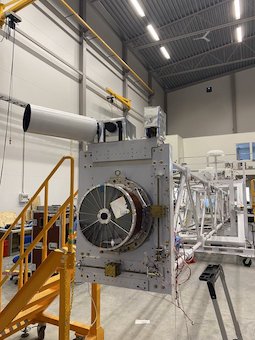
The mirror end of the XL-Calibur telescope truss
at Esrange Space Center, May 2022. The large white tube
is the off-axis star tracker, which allows precision
tracking when the telescope is pointed at stratospheric clouds or
tilted to high elevation targets (i.e. looking up through the
balloon).
Gondola
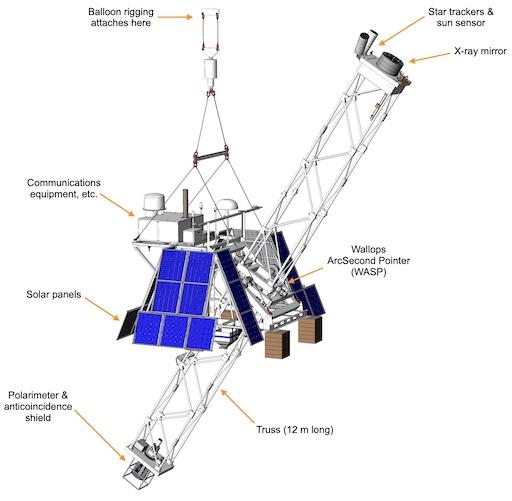
XL-Calibur diagram, including the entire gondola, steering systems, mirrors,
truss, and supporting components such as electronics and solar panels.
Movies
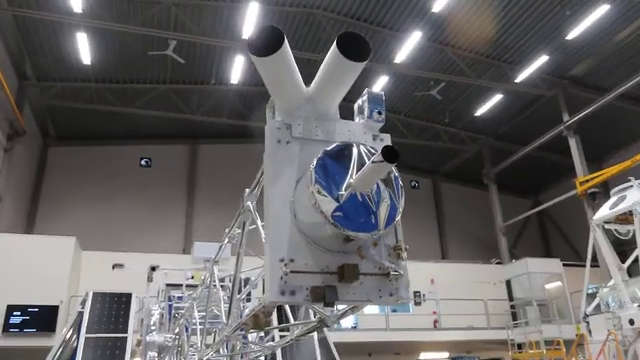
A walkaround of the XL-Calibur x-ray telescope on June 22, 2022 after
assembly at the Esrange Space Center in Kiruna, Sweden. The movie starts at the
mirror end and shows all three star trackers, the truss, gondola, solar panels,
and the polarimetry detector and its shielding at the back end (48 s;
640 x 360 MP4 (4.1 MB);
1920 x 1080 MP4 (27.8 MB);
YouTube
).